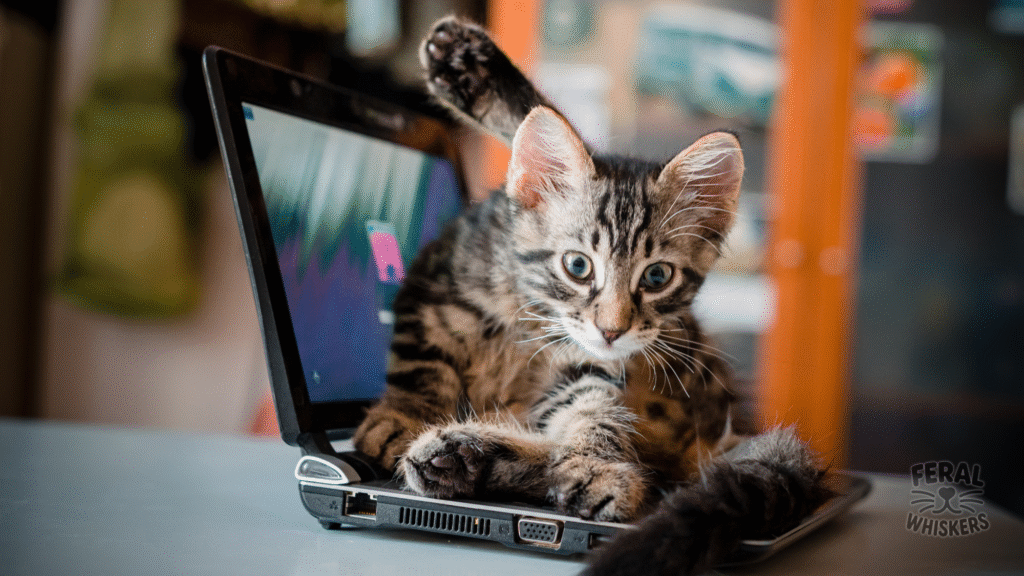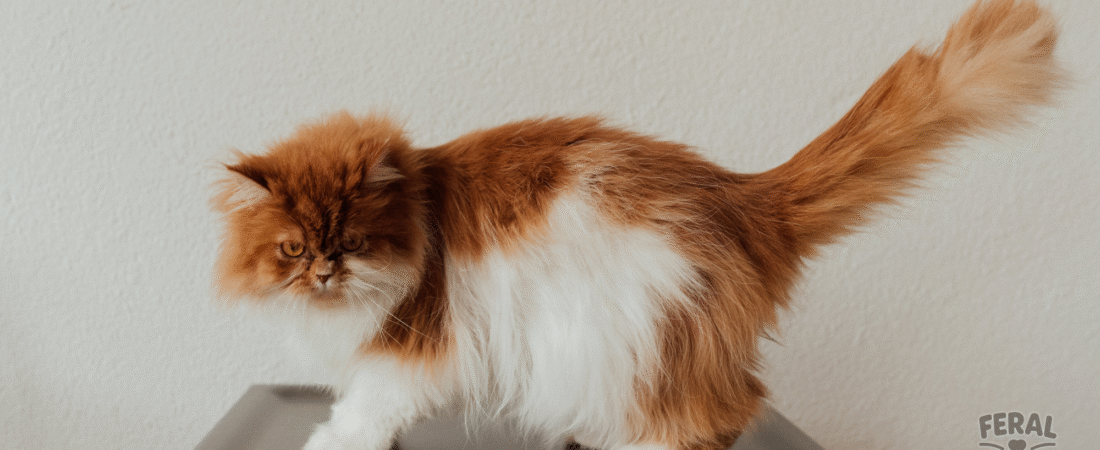📌 Why Understanding Cat Behavior Matters

Cats are equal parts mystery and comedy act. They sprint through your living room at midnight, knead your lap like they’re prepping pizza dough, deliver “gifts” you never asked for, and then… stare straight into your soul from across the room.
👉 To many people, these quirks look random. But in truth, each behavior has deep instinctual roots in hunting, bonding, communication, and self-soothing.
By decoding them, we:
- Understand our cats better 🐈
- Strengthen the human–feline bond ❤️
- Prevent misunderstandings (and scratched furniture) 🪑
🦠 The 10 Quirky Cat Behaviors Explained
1. The Zoomies Phenomenon: The Furry 2 A.M. Rocket 🚀
Cats suddenly burst into chaotic running, climbing, and leaping. Known as FRAPs (Frenetic Random Activity Periods), zoomies are a release of pent-up hunting energy.
- Triggered by boredom, play drive, or post-litter-box celebration.
- Solution: Daily enrichment + pre-bed play routine.
2. The Kneading Ritual: “Making Biscuits” with Your Lap 🍞
Cats rhythmically press paws into soft surfaces.
- Leftover kittenhood nursing motion.
- Comfort, relaxation, and scent-marking.
- Meaning: “You’re my safe spot.”
3. The Gift Giver: Dead Mouse, Sock, or Toy Tribute 🎁
Cats bring prey (or substitutes).
- Instinct: teaching helpless humans to hunt.
- Sign of affection and colony bonding.
- Meowing while delivering = “announcing the kill.”
4. The Purr-plexing Purr: Not Just Happiness 💭
Cats purr when content… but also when stressed, injured, or even dying.
- Frequencies heal tissue and bones.
- Can signal happiness or self-comfort.
- Context = everything.
5. The Box Obsession: Cardboard Is King 📦
Boxes = ultimate cat enrichment.
- Safe hideouts, perfect ambush spots, and warm dens.
- Reduce stress (shelter cats with boxes adapt faster).
- Proof cats prefer $0 enrichment over your $200 cat bed.
6. The Midnight Stampede: 3 A.M. Parkour Madness 🌙
Cats are crepuscular — most active at dawn and dusk.
- Biological hunting clock wakes them when you want to sleep.
- Extra chaos comes from boredom + attention-seeking.
- Manage with play–eat–sleep rituals before bed.
7. The Tail Language Code: Talking Without Words 🐈⬛
Cat tails signal their emotional state:
- Upright = friendly.
- Lash = irritation.
- Puff = fear.
- Curl = affection.
- Wrap-around = a hug.
8. The Headbutt of Love: Bunting and Booping 🤜❤️
Cats gently boop heads against you, walls, or furniture.
- Scent-marking + bonding ritual.
- Vulnerable gesture → means deep trust.
- Warning: head pressing (not bunting) is a medical red flag.
9. The Stare-Down Game: Your Personal FBI Agent 👀
That long, unblinking gaze across the room?
- Could mean curiosity, protection, or being in “hunt mode.”
- Slow blinks = feline kisses.
- Annoyed stare + flicking tail = “stop what you’re doing.”
10. The Gravity Experiment: Knock, Drop, Repeat 🥛
Cats push objects off edges — glass, pens, phones. On purpose.
- Instinct test: “Is it prey or not?”
- Curiosity: “What sound does it make?”
- Attention-seeking: “Watch me, human.”
- Boredom breaker: because it’s fun.
🏡 What These Quirks Teach Us
- Cats aren’t random — they’re working with instincts shaped by survival.
- Zoomies, hunting, purring, staring — all come from their wild DNA.
- But they also show deep trust and bonding: kneading, bunting, slow blinking, curling tails.
- The quirks we find funny are also clues about needs → energy outlets, comfort, safety, or affection.
🌿 Holistic Insights for Understanding Cat Behavior
- Enrichment prevents chaos: Boxes, toys, catios, puzzle feeders.
- Bonding rituals matter: Blinking back, accepting kneading, responding gently to bunts.
- Communication is subtle: Combine tail, eyes, body, and sound to interpret correctly.
- Respect = better relationship: Listen to their “stop” cues — like tail lashes or irritated stares.
❓ FAQs
Q1: Why do cats act so weird compared to dogs?
Cats are solitary hunters by nature. Their quirks are self-preservation tactics that carried into domestic life.
Q2: Are these behaviors the same for all cats?
Most are universal, but factor in personality, age, and environment. Some cats zoom daily, others hardly at all.
Q3: Can I train away unwanted behaviors?
Not train out, but you can redirect. Instead of stopping hunting play, give them toys. Instead of scolding knocked glasses, offer safe knock-ables.
💡 Final Thoughts
Cats are wonderfully weird — but their quirks aren’t random. They’re a language, a survival toolkit, and a love letter rolled into one furry package.
✅ Key takeaway: Understanding these quirks lets you laugh at them, manage them smartly, and deepen your bond with your furry roommate.

